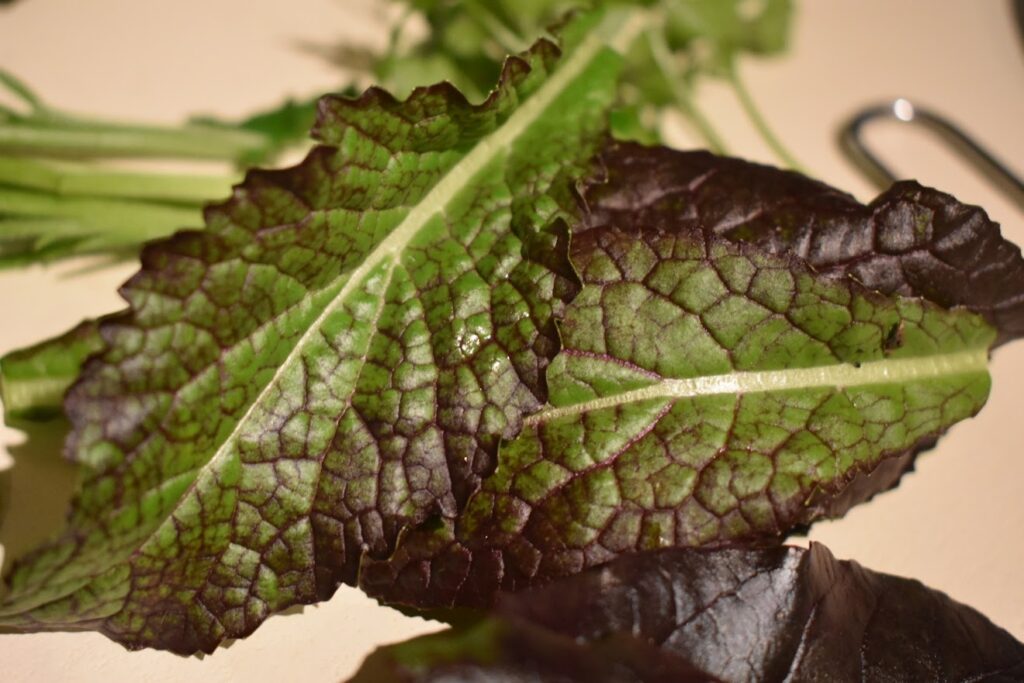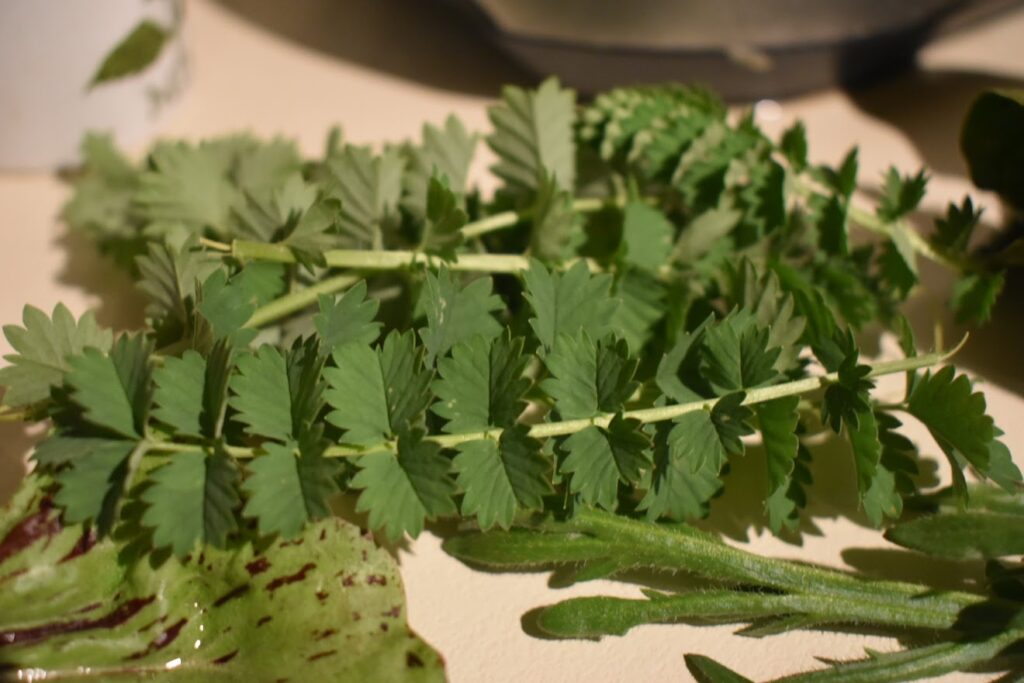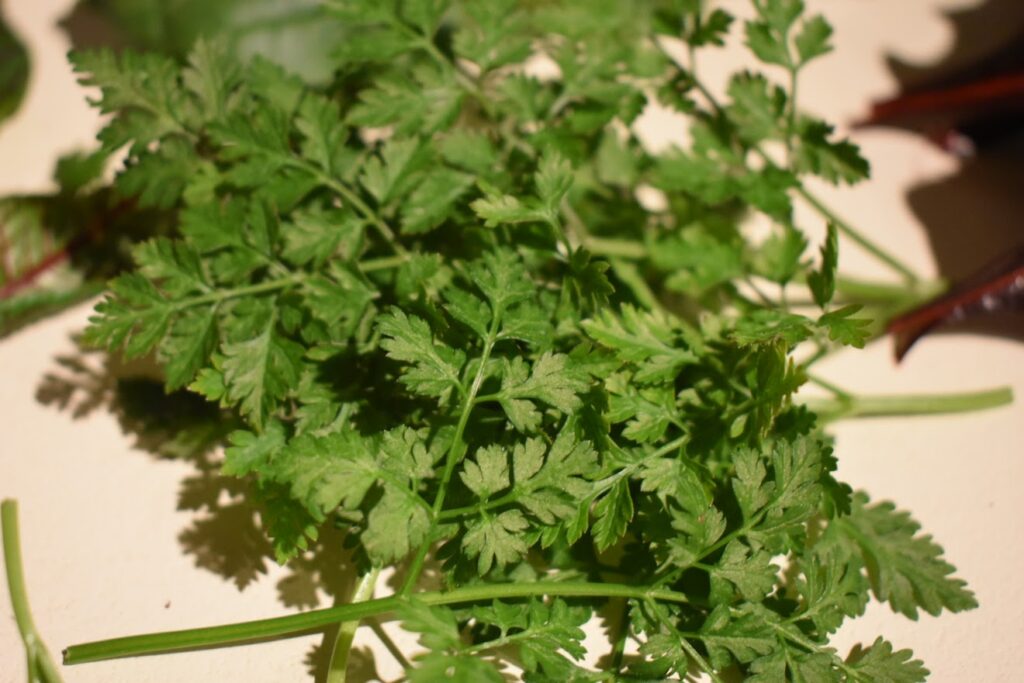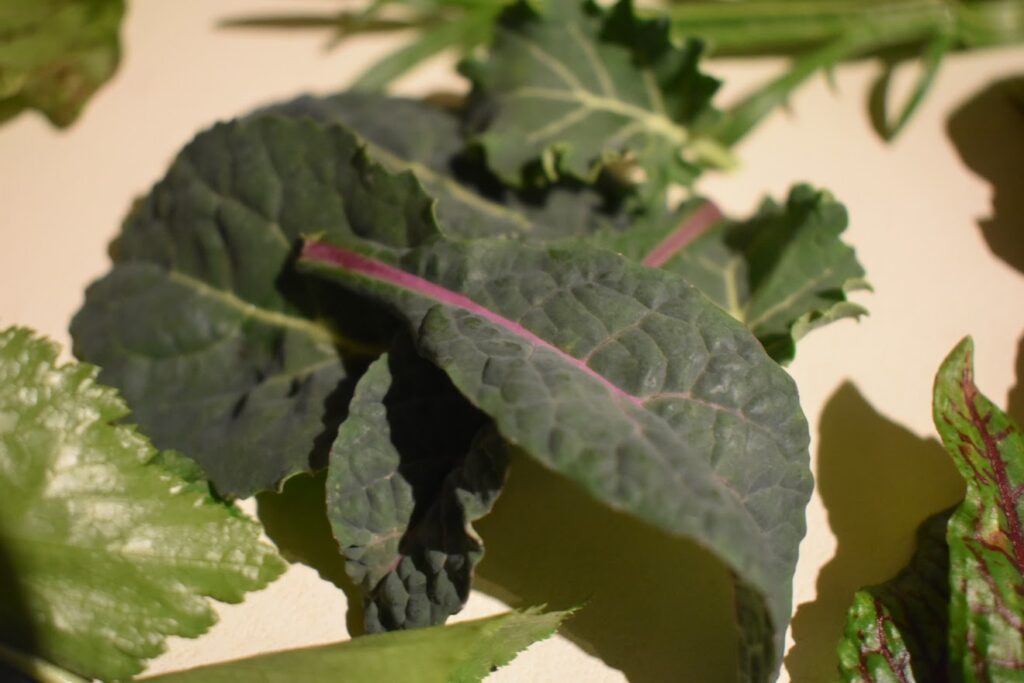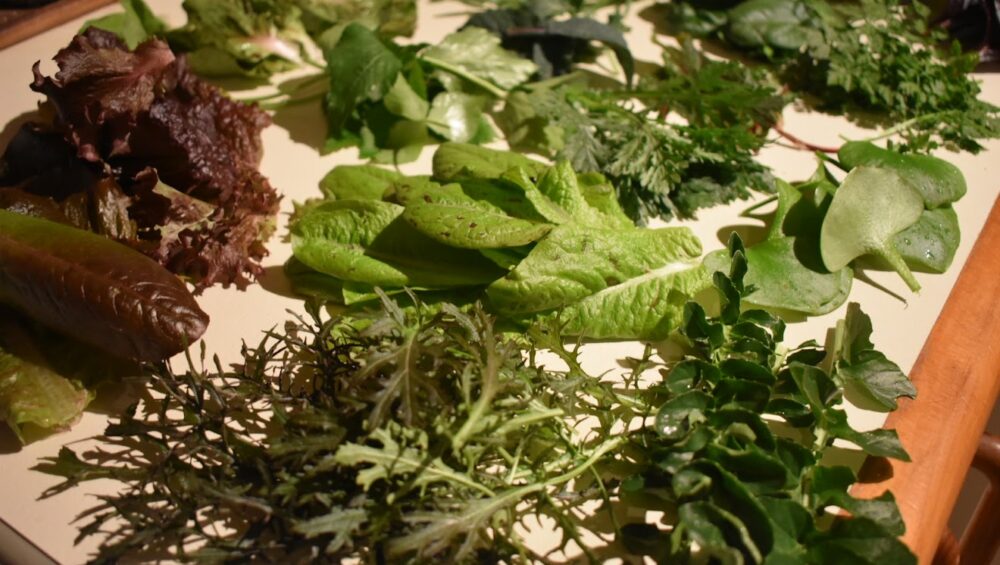Growing Salad Greens
There was a lettuce shortage. Fast-food outlets in June and July issued statements about leaving out greens from their meals because of widespread problems in getting lettuce. Weather bombs were blamed, as were challenges in supply chain logistics. Even in supermarkets the prices soared and bags of mixed lettuce leaves and heads of icebergs were left on the shelves.
I felt quite smug, however, as I harvested basket after basket of delightful greens during this time – even in the floods we had recently, and after that intense minus 5-degree frost! The bonus? About 95% of the leafy green goodness I picked for my salads and sandwiches were from self-seeded plants that “just came up” in my garden.
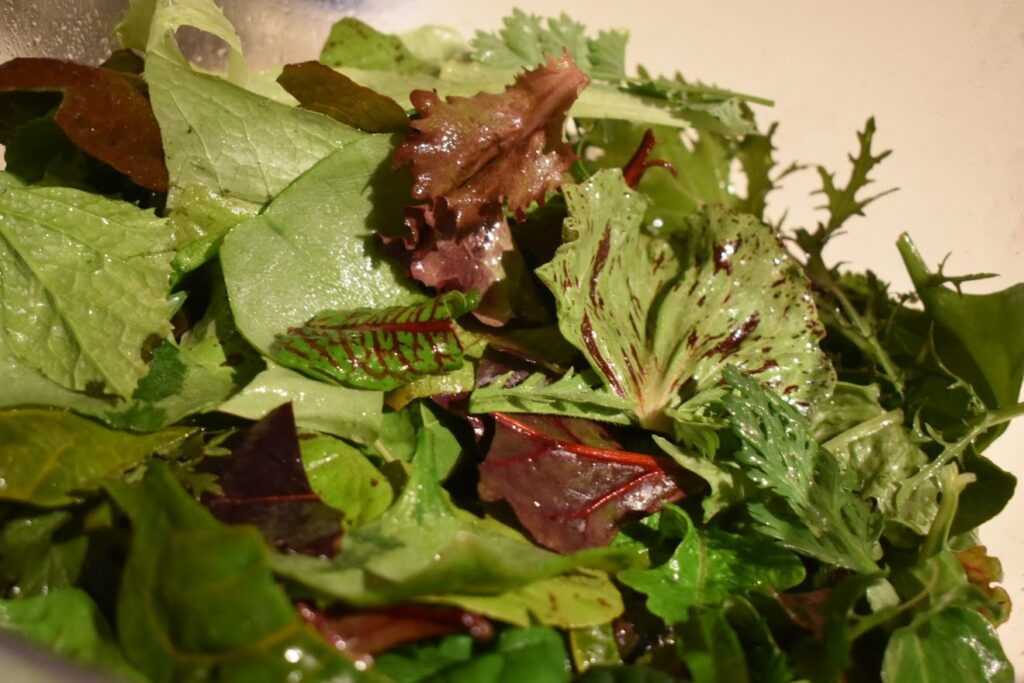

Lettuce
I prefer loose leaf lettuce or cut-and-come-again type lettuces such as Freckles, Drunken Woman Fringed Head, Rouge d’ Hiver, Oak Leaf and Red Velvet.
Sow & Grow
Sow seeds in trays or direct and cover very lightly with soil (not more than 2mm). When they are about 4cm tall, prick or thin out so that the final plant spacing is at least 20cm.
Lettuce can grow in full sun, but does better in dappled shade, especially in summer.
Pick leaves from the outer edge to prolong harvest.
Top tips:
Water regularly to prevent lettuce from being bitter.
Sow radishes in-between lettuce, they mature fast, and you can harvest the radishes just about at the time the lettuce needs the extra space, so you get double the crop in the same space.
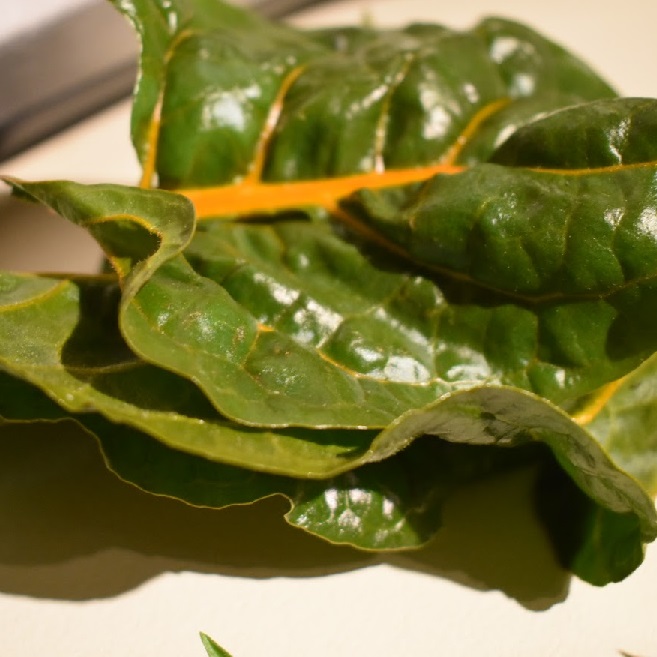
Spinach and Silverbeet
Baby leaf English spinach and baby leaf silverbeet/chard or perpetual spinach, are easy to grow additions to a mixed leaf salad. Even beetroot leaves are good in salads.
Sow & Grow
Sow direct or in punnets, to 1cm deep. Thin spinach to 15cm between plants and silverbeet to 30cm.
Both do well in a sunny or partly shaded position.
Pick young tender leaves for salads.
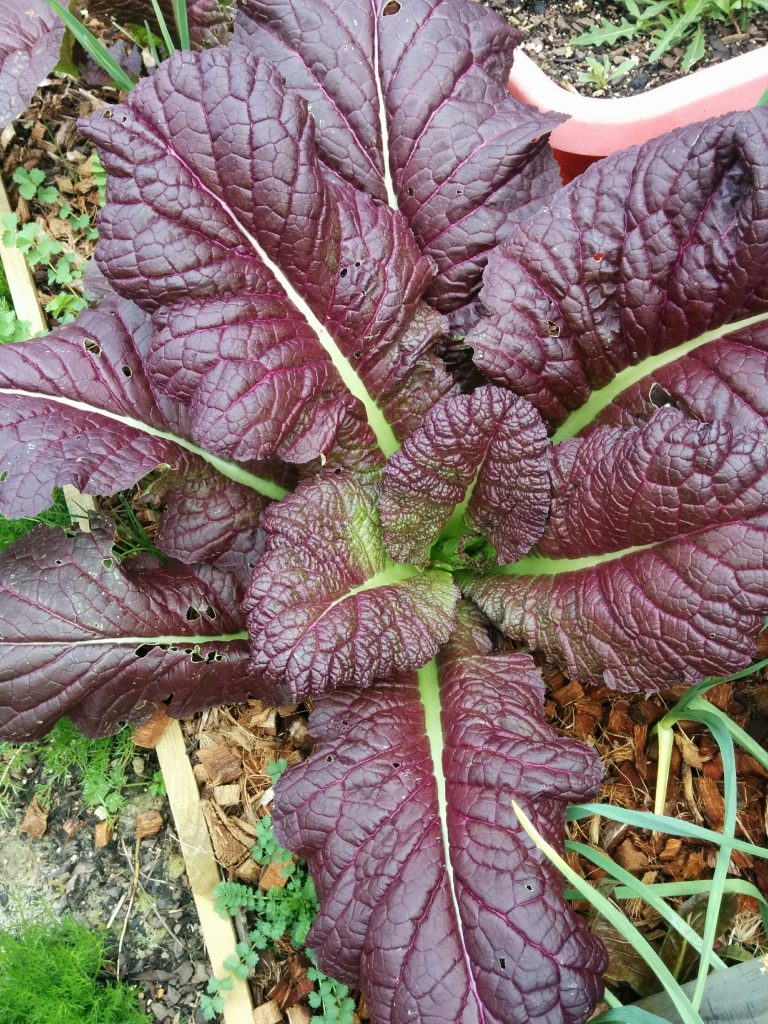
Mizuna & Mustards
Mizuna has more feathery leaves and are less pungent than mustard greens, but both are wonderful for salads and sandwiches.
Sow & Grow
Mustard seeds are small and only need a very thin layer of soil medium over them when they are sown.
Sow in punnets for transplanting, or direct where they are to grow in the garden.
Mizuna can be spaced between 10 and 20cm apart while you need quite a bit of room for giant mustard (up to 60cm spread)
Young tender leaves are best for salads.
If you let mustard go to flower you will be rewarded with bees galore in the garden! And once they form their seedpods, you can harvest them for use as mustard seeds in cooking too.

Chicories
Endive, frisee, radicchio, and escarole all refer to leaves of the different types of bitter plants in the chicory family that are staples in Mediterranean cuisine.
Sow & Grow
Seeds are best sown direct around half a centimeter deep in full sun to part shade.
Space between 5 and 15cm apart.
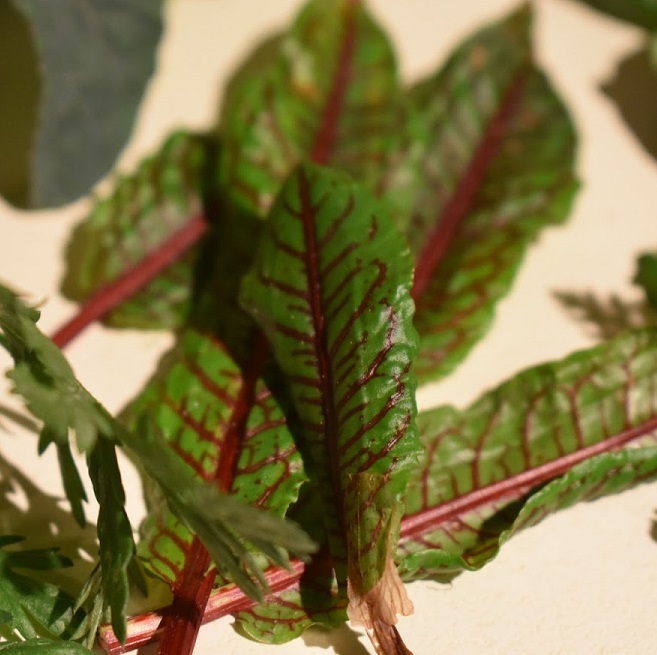
Sorrel
French sorrel delivers a delightful fresh tangy flavour and beautiful red veined sorrel adds interest.
Sow & Grow
Sorrel is perennial, so make sure you like where you plant it. A sunny spot in well drained soil suits sorrel just right.
Sow seed direct, planting them in clumps of 2-3 seeds 20 cm apart. Water regularly and harvest often to encourage new leaf growth.
Sorrel is known to self seed very profusely, and it is indeed true of red veined sorrel, so if you don’t want them to take over your garden space, be sure to snip off the flower heads as they appear in summer.

Rocket and Cress
With their characteristic hot peppery flavour, salad rocket, wild rocket, land cress and watercress are enjoyed in salads.
Sow & Grow
Both common salad rocket (Eruca sativa) and wild rocket (Diplotaxis tenuifolium) are easy to grow – similar to mustard seeds, they don’t need to be planted deep. Keep evenly moist in a sunny position.
Top tip: Sow successively to ensure a harvest all season long.
Watercress needs a very moist situation, and preferably a situation in which you can have it in running water or refresh the water often.

Corn Salad and Miner’s Lettuce
These “cultivated weeds” have a long history of being foraged as a salad green and are much prized when few other fresh leaves grow in winter and early spring.
Sow & Grow
Both are happy at self-seeding in the garden, so once you have them, you will likely always have them without needing to sow any more!
Miner’s lettuce benefit from a damper and shadier position, but is quite adaptable to many situations.
Corn salad, also known as mache, is sown to 1cm deep in drills and thinned to 10cm apart.

Herbs
Add shungiku (chop-suey greens), chervil, par-cel, mitsuba (Japanese parsley), coriander, parsley, and salad burnet to salads for flavour and interest.
These tender tasting herbs are available plentiful during the cooler seasons add a pleasant interest to any salad.
Sow & Grow
Full sun to part shade in a well drained site.
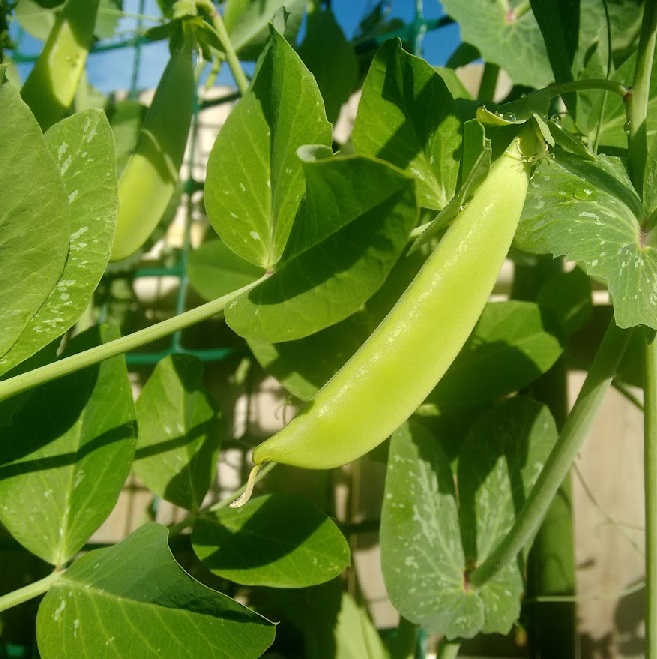
Other veggies
Early season vegetables such as pea shoots and tendrils as well as broad bean tips and side-leaves make brilliant greens for salads.

Weeds
You may not grow them a-purpose, but might find swathes of chickweed, dandelion and plantain in your garden or lawn early spring – all perfectly edible and delicious as alternative greens.
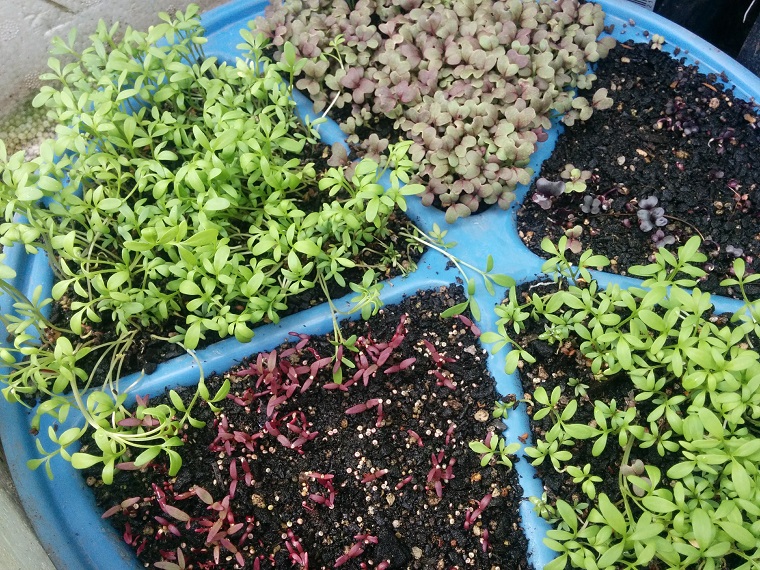
Sprouts and microgreens
Another idea is to have trays of microgreens growing on your benchtop or to sprout some seeds
